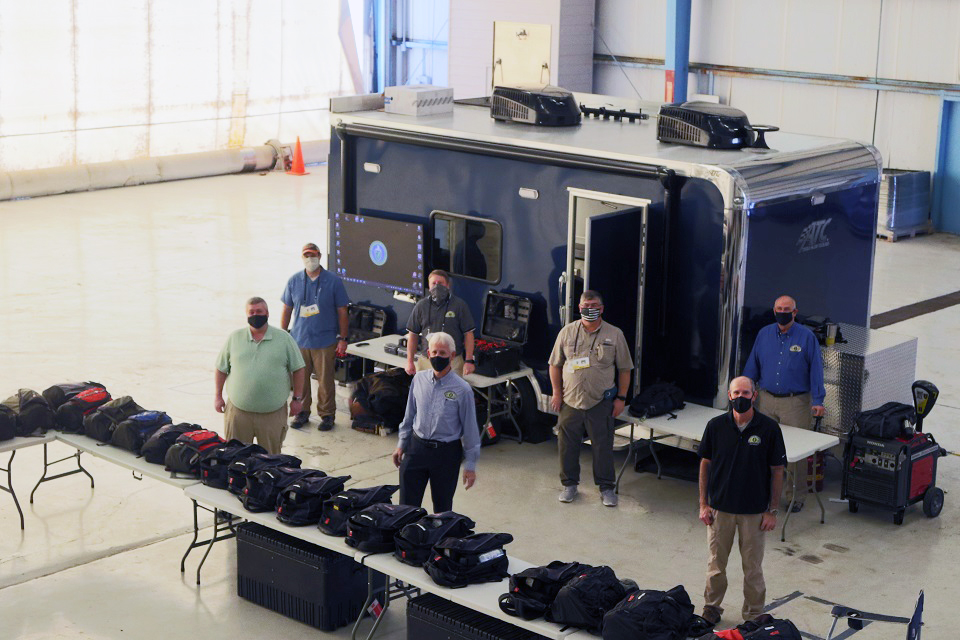
Members of the Region 2 Radiological Assistance Program preparing to mobilize at Super Bowl 55 in Tampa. From left, front row: Bill Riley, Steve Johnson, Jeff Barroso, and back row, Steve Cleveland, Jeff Bruner, Perry Pruitt, and Michael Murray. Team member Dale Perkins is not pictured.
When the world is watching, and you’re working security at high-profile events during a pandemic, standard safety protocols aren’t enough. For team members of the Region 2 Radiological Assistance Program (RAP), attending the Presidential Inauguration in Washington, D.C., and Super Bowl 55 in Tampa, Florida, involved total focus to the mission and enhanced COVID-19 protocols.
RAP teams are located regionally across the country and are the nation’s first-response resource in assessing an emergency and advising decision-makers on the hazards of a radiological incident. Region 2 is managed out of the Y-12 National Security Complex and is comprised of volunteer responders from Y-12, the National Nuclear Security Administration, and Oak Ridge National Laboratory.
On Jan. 26, Region 2 RAP members were in our nation’s capital supporting security surrounding President Joe Biden’s inauguration. Y-12’s Rich Utrera and three ORNL volunteers were there conducting preventive radiological nuclear detection (PRND) support.
”With COVID-19 and heightened security concerns around the Capitol building, we stayed in the background for the most part,” said Utrera. “We did our jobs, but kept away from the public as much as possible, keeping all us safe.”
Jeff Barroso, Y-12 Emergency Services and RAP 2 operations manager, said COVID-19’s impact may have reduced the size of the crowds attending both events, but it didn’t diminish the need for security.
At the Super Bowl for instance, organizers limited attendance to approximately 24,000, well below the stadium’s capacity. The Kansas City Chiefs (the visiting team) didn’t arrive in Tampa until the day before the game. The Super Bowl Experience, an opportunity for fans to see current and past NFL players, was scaled back.
“In spite of the changes, the Super Bowl remained one of the most-watched events of the year,” said Barroso. “With that level of exposure, all security-related preparations remained at a very high level, and RAP was expected to safely execute their mission to the effort.” In total, eight Region 2 RAP members supported the PRND operations for Super Bowl.
In both cities, RAP members followed the standard pandemic safety protocols - masks, daily temperature checks, and social distancing - but enhanced elements were also added. RAP members had to test negative for COVID-19 before being allowed to make the trip. Vehicle occupancy was limited to two members per vehicle, with the passenger sitting in the back seat.
“These enhanced controls allowed RAP to minimize the team’s exposure to COVID-19, while conducting our important duties,” said Barroso.